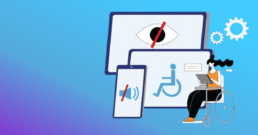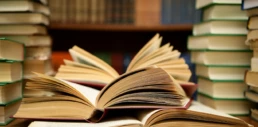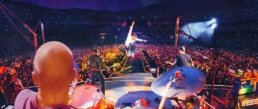Energizer: up, down, left, right
Up, down, right, left
Objective: The goal of this activity is to help participants experience the challenges of unlearning previous associations, emphasizing the need to unlearn to learn something new. Minimum group size: 2
Instructions:
- Brief the Participants: Ask all participants to stand up. Let them know that they will be given instructions on which direction to look, and they should respond by tilting their heads in the indicated direction. Emphasize that only the head should move, not the entire body.
- Explain the Details: Provide clarity on how to respond to the instructions. When you say "Up," participants should tilt their heads to look at the ceiling or sky. When you say "Down," they should lower their heads to look at the floor or their feet. "Left" and "Right" require participants to turn their heads accordingly.
- Give Directions: Start giving instructions using the words "up," "down," "left," and "right" in a random order. Encourage participants to follow your directions, keeping the pace fairly rapid.
- Change the Meaning: After about a minute of following the initial instructions, inform the participants that you are going to make a change. Explain that from now on, "up" will mean "down" and vice versa. So, when you say "Down," they should actually look up at the ceiling, and when you say "Up," they should look down at their feet. Make it clear that "left" and "right" will remain the same. Continue to call out the four directions in a random order and ask the participants to follow the new instructions. Expect many "mistakes" and laughter.
- Conclude the Session: After another minute or so, announce the end of the activity.
Learning Points:
- Unlearning is a Challenge: This activity illustrates that unlearning old concepts is not easy and can be confusing. It demonstrates that you need to let go of previous knowledge or habits to adapt to new procedures or ways of doing things.
- Interference of Old Ways: The old way of doing things can interfere with learning new procedures. Participants experience firsthand how their pre-existing associations and habits can affect their ability to adapt to new instructions.
This activity is a fun and engaging way to highlight the cognitive challenges associated with unlearning and adapting to new information or processes. It promotes self-awareness and underscores the importance of being open to change and receptive to new learning.
Inclusive CX: Bridging the Gap through Accessibility
Did you know that 15% of the world population has some form of disability? And did you know that 1 out of 12 males and 1 out of 200 females are probably unable to distinguish the red and green dots in this posts visual?
Some form of disability includes: motor impairment, low literacy, slight mental handicap, dyslexia, color blindness, visual and auditive impairment
Have you ever stepped in the shoes of these customers? Do you specifically design your products and services for these customers?
Accessible design is focused on ensuring that interfaces and technology can be used by people with disabilities. We recently hosted a @womenincx event on this topic and if the participants were representative for most companies, then you've either just embarked on desigining for accessibility or have a desire to do so. Which is good news!
But where to start?
There are tons of great resources on the internet, but there are also some great books out there worth reading:
* Accessibility for Everyone by @Laura Kalbag
* A Web for Everyone by @Sarah Horton and @Whitney Quesenbery
* Designing Across Senses by @Christine Park and John Alderman
Let us know which other resources you know which are worthwhile to share with anyone looking to move forward on designing for accessibility!
Must reads to supercharge your CX knowledge
Summer's in full swing, and you know what that means – it's time to level up your customer experience game! Whether you're chilling on the beach or sipping a cool drink by the pool, here are the 5 must-reads to supercharge your CX knowledge this season! 📚🏖️
* Why Your Customer Experience Program Will Fail by Friederike Niehoff and Aleksandra Pilniak. 93% of all CX programs fail. Read this book to understand what you need to do to make it to the 7% that is successful.
* The Digital-First Customer Experience by Joe Wheeler. Digital-first is an important trend in CX and based on real-life cases, this books helps you design the right digital-first experience.
* Built to Win by Annette Franz, CCXP. Looking to read up on Customer-Centric Culture? Look no further! How to transform your existing company culture and rebuild it around the needs of your customers.
* Never Lose an Employee Again by Joey Coleman. This list would not be complete without a book on Employee Experience (EX). Including practical strategies that will teach you exactly how to recruit top talent, bring them on board successfully and keep them engaged.
* And in the Design category: This is a Prototype by Scott Witthoft and Stanford University Institute of Design / d.school. Definitely read this if you want to become better at prototyping.
Happy reading! 📚
7 things we can learn from Coldplay!
Even when expectations (and prices) are sky high ...
Coldplay still keeps amazing and delivering an unrivalled experience in so many ways that other artists (and companies) can only dream of!
OK, there is this amazing show, 2 hours of songs you can sing and dance along with, perfect live performance and a visual experience you don't see anywhere else!
But what else stood out:
7 things we can learn from Coldplay!
1. Being authentic
Chris Martin is Chris Martin. What you see is what you get. You feel he genuinely cares. Everything he does is real, from having fun on stage to improvising and talking to his fans and showing his appreciation for his other band members.
2. Staying positive
Not only with catchy songs and confetti and fireworks but also when it starts raining at the beginning of the concert. He just keeps smiling and starts singing:
I have been in Paris, I have been in Spain
but nothing beats Amsterdam in the rain!
3. Making a personal 1-1 connection
When inviting a girl on stage who asks him to sing the song FLY ON for her brother in heaven. Clearly improvising, making apologies to her and her brother for making some keyboard mistakes, and asking her to sing along with him while looking up together to heaven
4. As well as connecting to all 60.000 people
By asking visitors to put away their cameras for a moment, pointing out that this is a very special moment: we will never be together with these 60.004 people. And we take the next 3 minutes to enjoy it together to the max! And what a difference it makes: 60.000 fans (from 5 to 75 years old) jump to the tunes of A sky full of stars! and experience the moment!
5. Valuing customers for their business
Thanking fans various times throughout the evening for coming to the show, for travelling and taking all the effort to see the concert. And giving attention to ALL visitors, not only to those in the front, but playing a part of the concert on the other side of the stadium so people in the back get the best seats for a part of the concert.
6. Contributing to a better planet
Before starting the show, pointing out all their efforts and achievements in the area of sustainability (and there are too many to mention); walking around with a rainbow flag and supporting the LGBT community; and asking everyone to keep spreading love
7. In the end ... Making it memorable
It is Friday; the concert was on Tuesday and the experience is still in my memory and here to stay.
OK, we are not Coldplay, but if we take at least one of the above points with us, we are sure this will lead to delivering better experiences for all of us!
Customer Surveys - Main Pitfalls
A good customer understanding can be seen as the cornerstone of customer experience. Customer surveys are by far the most used tool to get customer feedback. And while these surveys hold immense potential for understanding customer preferences and improving products or services, they are not without their pitfalls. Here we share some pitfalls every business should be aware of before sending out a customer survey:
1. Survey Fatigue
There are too many surveys with too many questions. An access of surveys can lead to low response rates and rushed and inaccurate responses.
2. Surveys dissatisfy customers
Surveys are often the last touchpoint in the customer journey. If you ask irrelevant questions, it might annoy your customers, leaving a negative last impression of your brand.
3. The wrong customers answers
If surveys are only sent to or being answered by a specific group of customers, the data collected may not be representative of the entire customer base. This can lead to skewed insights and misguided decisions.
4. The wrong questions are asked
Leading, irrelevant or misunderstood questions, lack of context, limited response options; making a good questionnaire is a profession! Asking the wrong questions can lead to unactionable date, the wrong insights and decisions.
5. No follow up is given
Although almost all companies collect some form of customer feedback, just a small percentage structurally puts it into action and closes all feedback loops! Some surveys are just marketing campaigns in disguise and only have the objective to show the outside world how good the company is doing.
6. Gaming and manipulation
If employee rewards depend on customer survey scores, you will have the risk that surveys will only be shared with happy customers or customers will even be asked to rate a 9 or 10. The metric itself becomes the target, not the improvement of customer insight or the customer experience.
Create emotional engagement with your customers: stimulate the five senses
In previous journey mapping sessions we have done with our clients, we look at the main journey phases and always map at least three elements: the customer needs, customer actions (what they do) and customer emotions (how it makes them feel). Zooming in on the emotions is an effective way to see where to take action to improve the experience. This can be done by fixing pain points or by creating extra value points. From there we go to find the best solutions: the ones that create maximum customer value at a relatively low implementation effort for the organization. Quite straightforward.
So far, this is nothing unusual. But not every company consciously looks at their journey to see where they can stimulate the right human senses. We think this could or rather, should be a very relevant part of every journey mapping exercise.
Why is stimulating the senses important?
Science shows that by stimulating the senses, you will appeal to what is known as the customer’s first brain. This brain is the oldest brain; it has been around there for 500 million years, and it is common among most animals. It is primitive and emotional! It manages the unconscious thoughts and plays an essential role in the overall customer experience and how it makes customers feel.
How to stimulate the senses?
There are numerous examples of the use of senses in retail environment, hospitality, and airline industry. I am going to give you some examples used in the airline industry, of course it can be applied to any industry where there is physical contact between the company and its customers.
Sight
Customers depend more on sight than on any other senses to navigate through a physical environment. At first glance, a first impression is formed. When you enter an aircraft of Virgin Atlantic, you don’t have the feeling that you are walking through a working area for crew with containers, like with most airlines. No, next to a welcoming crew, you see a nice bar and the right lighting that sets a comfortable mood. This nice atmosphere makes you feel relaxed. Suddenly you are looking forward to your 10 hour flight.
Hearing
Sound, especially music, can bring the visual world to life and can bring back memories. Virgin played poppy music from Blondie to Kylie Minogue and David Guetta. Delta Airlines played Pharell William’s Happy during boarding and disembarking the aircraft. It works both ways: when you hear the music on board, it stimulates a positive mood. And when you hear it back home, it might bring back Delta memories.
Smell
Smell is a powerful sense. It is the strongest trigger of emotional memory. I am sure if you smell the perfume that your mother used many years ago, it will bring you back to your childhood. Airlines also invest in scent marketing. Since the 1990s, Singapore Airlines has created its own fragrance as its scent brand. But it can be applied in other ways: Delta Airlines was famous for serving chocolate chip cookies on board. By heating them, the whole cabin could smell it and long for the upcoming treat.
Taste
Free tasting options are used at many food courts, as it increases the overall sales. But also outside of the food business you can use it. Some airlines offer free cookies in baggage reclaim areas, managing perception about waiting times. And seen from a different perspective: as your taste on board of an aircraft is different than on the ground, it brings some extra challenges to provide tasty meals and good tasting (not too acid) wines on board.
Touch
Touching something moves it from a representation / an idea to something true. Although with Covid-19 this has changed, instinctively people want to touch something to get a better idea of it or to check or experience the quality. You choose to use what you enjoy touching! For airlines, attention is now being paid to high quality amenities and good bed linen in First Class cabins.
So what can this mean for you your company and your customers?
Have a look at your company’s customer journey and see where you trigger which senses
- Where in the journey does your customer see, hear, smell, taste or touch?
- Which emotional reactions does and/or can it trigger?
- Does it enhance the customer experience? Or could it have negative impact?
Both in general as well compared to your desired experience and brand positioning?
Want to know more on how to trigger your customer’s senses and improve the emotional engagement? And how to embed this in your journey mapping exercise? Please contact us at hello@cxunraveled.com
CitizenM - Blown away by the passion for their guests
Last week, I had the pleasure of meeting with Evelien van Damme and Diego Sartori. Both work in the CitizenM Support Office. Don’t be fooled, this is what most companies call their Head Office, but at CitizenM everyone serves the Ambassadors (=front line staff) who work in the hotels. Any people not directly working in their hotels work at the Support Office. And do you know what? Their CEO is actually at the bottom of this support pyramid. Revolutionary, but on the other hand so right!
For those of you who don’t know CitizenM – they are a hospitality company born out of the frustrations business travelers and weekenders experienced in more traditional hotels. You can find their mission statement below.

I was blown away by the passion both Evelien and Diego exhibit for CitizenM guests; something I honestly have never experienced before at other companies. While talking with them, they explained to me the CitizenM DNA, which comes down to their 5 core values:
- Passionate attitude
- Smart thinking
- Contemporary style
- Genuine touch
- Real Caring
At CitizenM all employees live & breathe these values. It starts during the hiring process, which they call Casting Days and has similarities with the X Factor show. CitizenM doesn’t hire people (necessarily) with a hospitality background, they hire for personality. And they use a bunch of very cool recruitment techniques to figure out someone’s personality.
- Who is Your Hero? Asking potentials to share their hero stories helps them figure out whether people are able to open up and share emotions.
- Blind Tasting. Tasting something without knowing what it is and then describing it to peers (without telling what you think it is), lets them see how people communicate
- They have potentials create a moodboard explaining what CitizenM is and isn’t, to figure out if they understand the concept and company values.
After recruitment everyone is trained in these values, they even get to experience them firsthand during their Experience Shift and Experience Stay. An Experience Shift is literally being an Ambassador for a day and shaking cocktails, preparing breakfast and doing basically anything required to give the CitizenM guests a blast of a time. The Experience Stay is when employees themselves are guests in a CitizenM hotel, so they too can experience the various parts of the customer journey and really feel what it is like to be a guest at CitizenM.
It doesn’t stop there – employees call each other out when they notice that they aren’t living up to the CitizenM values and Diego shared, that just last month during a Team Day 2 colleagues prepared a workshop to discuss which values they were living up to and on which values they needed to work.
We talked about lots more, but I wanted to share these particular items with you, because to me this makes CitizenM an outstanding CX Leader in the area of Customer Obsessed Culture. We’ll be back in a next blog to share the Factors of Influence you have as a company to create a Customer Obsessed Culture.






